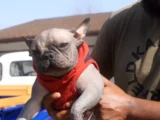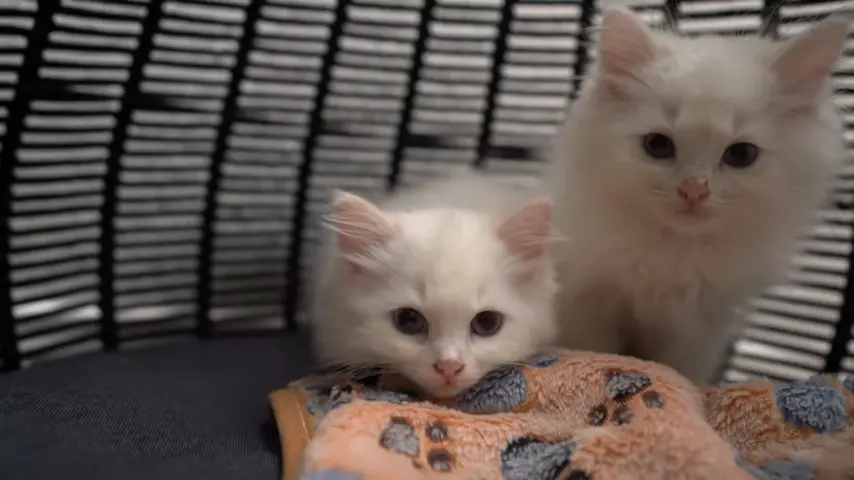
Types of Ragdoll Markings: A Complete Guide (with pictures)
Ragdoll cats are known for their striking appearance, affectionate nature, and—most notably—their distinctive markings. As one of the most popular and visually stunning cat breeds, Ragdolls stand out due to their large size, soft coats, and, of course, their unique color patterns. These markings are more than just aesthetic; they play an essential role in defining the breed’s identity and are integral to its overall charm.
Recognized by major cat organizations like the Cat Fanciers’ Association (CFA) and The International Cat Association (TICA), Ragdolls are prized for their gentle personalities, which make them one of the most beloved family pets. However, it’s the variation in their coat patterns—ranging from Colorpoint to Mitted and Bicolor—that often captures the attention of prospective owners and breeders alike. These markings not only define the breed’s physical appeal but also contribute to its genetics, helping to distinguish Ragdolls from other cat breeds.
In this article, we’ll explore the different types of Ragdoll markings, diving into the unique features of each pattern. Understanding how these markings are inherited, along with the science behind their appearance, provides insight into the breed’s genetic makeup and why certain patterns are more desirable for show cats. Veterinary studies and genetic research have revealed that these markings are tied to specific genes, which can influence traits such as fur color, length, and texture.
Whether you’re a potential Ragdoll owner or a breeder working to refine your line, knowing about these markings is crucial. Not only will it help you appreciate the breed’s beauty, but it will also guide you in selecting the perfect Ragdoll based on its color pattern. Let’s take a closer look at the fascinating world of Ragdoll coat types and the genetics that make them so special.
What Makes Ragdoll Cats Unique?
Ragdoll Cat Size and Coat Characteristics
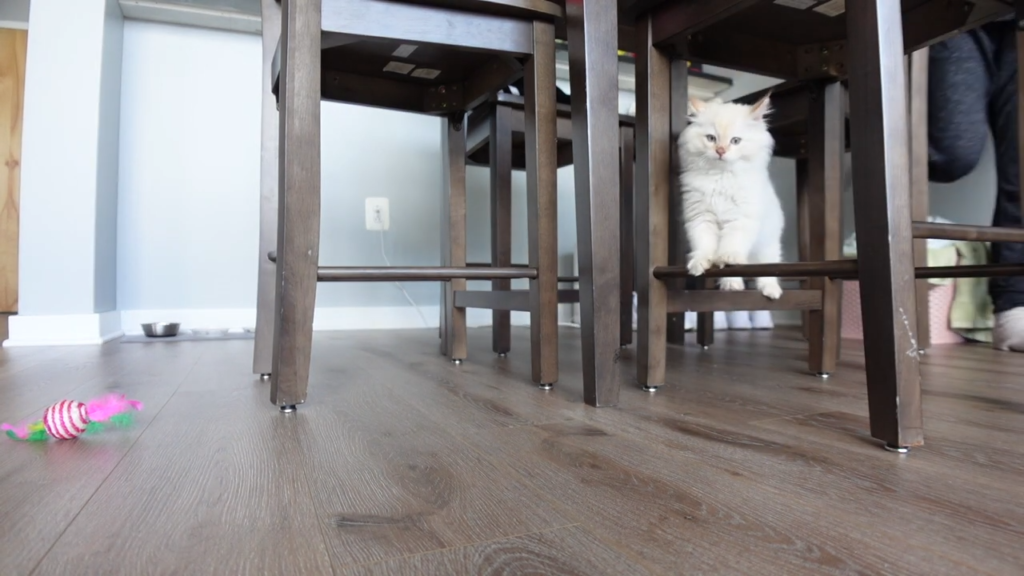
Ragdolls are one of the largest domestic cat breeds, with adult males often weighing between 15 to 20 pounds and females ranging from 10 to 15 pounds. Their luxurious semi-long coat is soft, silky, and plush, requiring regular grooming to prevent mats and tangles. Despite their size, these cats are incredibly friendly and tend to follow their owners around, showing a level of affection akin to that of a dog.
General Characteristics of Ragdoll Cats
Ragdoll cats are well-known for their striking appearance and sweet, docile nature. These cats have earned the nickname “puppy cats” due to their tendency to follow their owners around and their love of being held and cuddled. With their large, muscular bodies, silky coats, and piercing blue eyes, Ragdolls exude an air of elegance that is hard to ignore.
Their gentle, laid-back temperament makes them ideal companions for families, singles, and even other pets. They are known for their calm disposition and ease in adapting to new environments, making them one of the most popular breeds for those looking for an affectionate feline friend.
Interestingly, the Ragdoll’s markings are often thought to reflect their regal nature. Some believe that certain patterns, like the symmetrical Bicolor or the striking Colorpoint, give them a more “royal” or majestic appearance, complementing their dignified behavior. While temperament is largely shaped by genetics and socialization, there is a sense that a Ragdoll’s markings and personality go hand in hand, with each pattern contributing to the cat’s overall charm.
Why Markings Are Important
Ragdoll markings are not only aesthetic—they are a key part of the breed’s genetic identity. The distinctive coat patterns, from Colorpoint to Mitted and Bicolor, are all governed by specific genes, and they play a major role in defining the breed’s appearance.
Additionally, Ragdolls are recognized by organizations like TICA (The International Cat Association) and CFA (Cat Fanciers’ Association), which have established breed standards for show-quality cats. These standards highlight the importance of markings in determining a Ragdoll’s ideal look and overall breed conformity.
Types of Ragdoll Markings: Color Patterns and Coat Types
Ragdoll cats are famous not only for their affectionate and gentle nature but also for their stunning coat patterns and color variations. These beautiful felines come in a range of different markings, making each one unique. Understanding the different types of Ragdoll markings can help potential cat owners choose the perfect cat for their aesthetic preferences. Let’s explore the classic color patterns and coat types of the Ragdoll breed.
ColorPoint Pattern
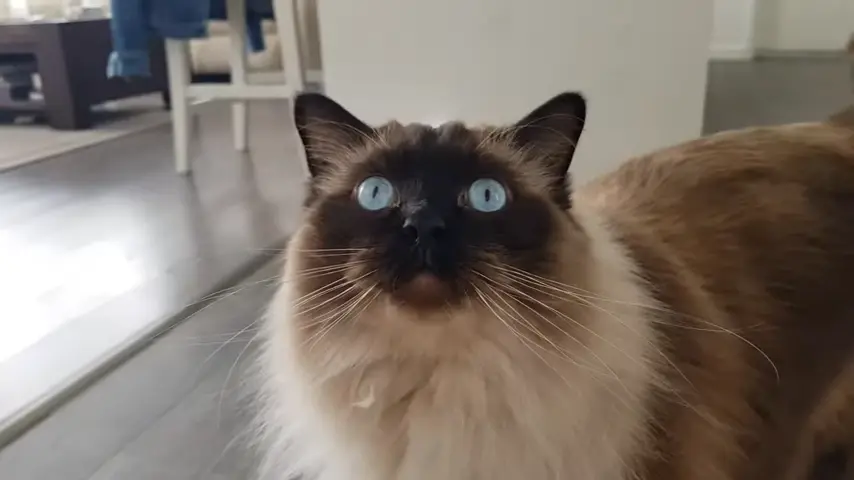
Explanation
The Colorpoint pattern is one of the most iconic and well-loved characteristics of the Ragdoll breed. This pattern is easily identifiable by the darker colors on the cat’s ears, paws, tail, and face, which contrast with the lighter body color. The Colorpoint pattern is similar to other “pointed” breeds, such as the Siamese, where the darker areas are concentrated on the extremities (ears, face, paws, and tail). This pattern is not just visually striking but also serves as a point of differentiation for Ragdolls from other cat breeds.
Common Colorpoints:
- Seal Point: Dark chocolate points with a light beige or fawn-colored body. This is the most common Colorpoint pattern.
- Blue Point: The points on these cats are a soft bluish-gray, while the body is a silvery color. The contrast between the body and points is not as stark as with other Colorpoints.
- Chocolate Point: The points are rich milk chocolate, and the body is creamy in appearance. The overall contrast tends to be softer.
- Lilac Point: Lilac Point Ragdolls have points that appear in a frosty lavender hue, paired with a pale, almost white body color.
Genetics Behind the Colorpoint Pattern
The color variation in Colorpoint Ragdolls is controlled by a temperature-sensitive enzyme. This enzyme affects the production of pigment in the fur, causing darker colors to develop on the cooler parts of the cat’s body—those that are farther from the cat’s core, such as the ears, paws, and tail.
The warmer areas of the body, like the torso, remain lighter. This gene is a form of albinism, and it is triggered by the lower temperature of these extremities, making this pattern a genetic marvel.
Mitted Pattern
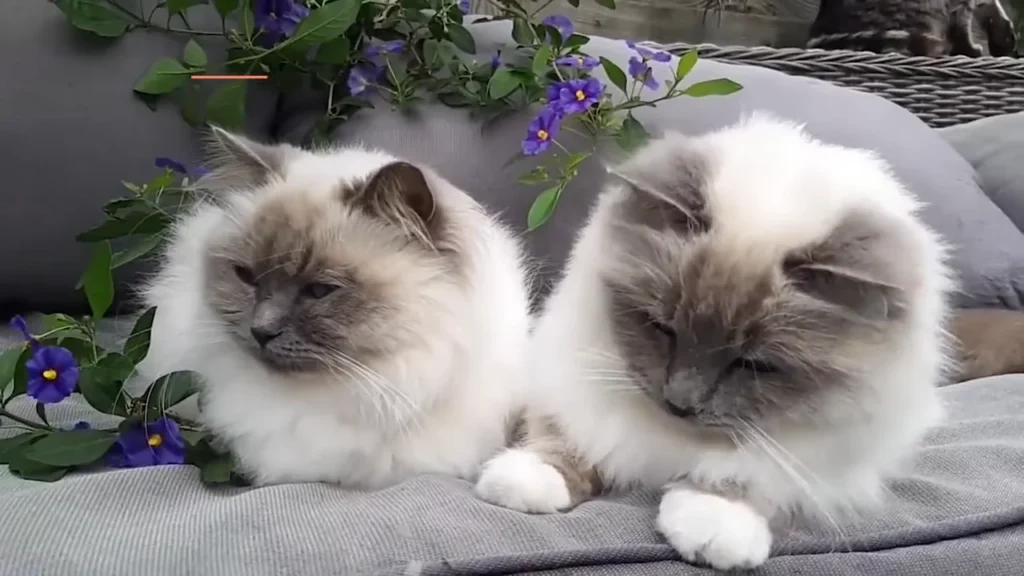
What Does “Mitted” Mean?
Mitted Ragdolls have a distinct appearance characterized by white “mittens” on their paws, which gives the cat the appearance of wearing little socks. They also typically have a white chin and often a white stripe running down their belly. This pattern gives Ragdolls a more elegant look compared to solid color or fully pointed cats.
Differences Between Mitted vs. Bicolor
While Mitted Ragdolls do have a significant amount of white fur, they are distinct from Bicolor Ragdolls, which we will explore later. The main difference is that Mitted Ragdolls have more white on their legs and underbelly, but typically, their body’s color is not as evenly distributed. In contrast, Bicolor Ragdolls often have more symmetry in their color distribution, with an “inverted V” white marking on their face.
Mitted Ragdoll Appearance
This pattern is beloved by cat owners who want a mix of white markings and the classic Ragdoll color pattern. The white mittens and chin give these cats a unique look, making them a popular choice among those who appreciate the balance between color and white fur.
Bicolor Pattern
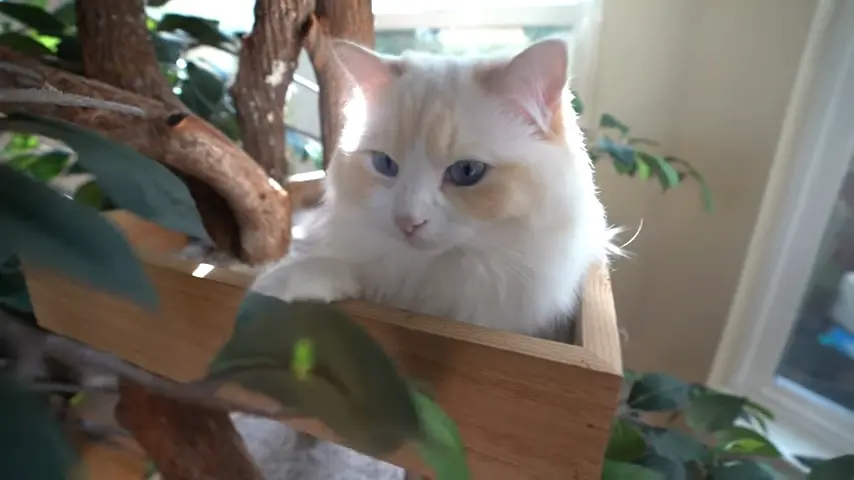
What Makes a Ragdoll Bicolor?
The Bicolor pattern is one of the most dramatic and symmetrical looks for Ragdolls. These cats have an inverted “V” shape of white fur on their face, which runs down the center of the nose and typically extends down to their chin. The rest of the body is mostly white, including a white underbelly, while the dark points on the ears, paws, and tail contrast sharply against the white areas.
Visual Features
The Bicolor Ragdoll’s color distribution is typically more even and symmetrical than other patterns, which is why they are particularly prized in cat shows. Their face, with the inverted “V” marking, is especially striking, as the pattern emphasizes the cat’s gentle, sweet expression.
Show Ragdolls with the Bicolor pattern are highly sought after due to their dramatic appearance. The perfect Bicolor Ragdoll showcases well-defined color points, particularly on the extremities, with an even white underbelly and a striking facial marking.
Lynx and Tabby Markings
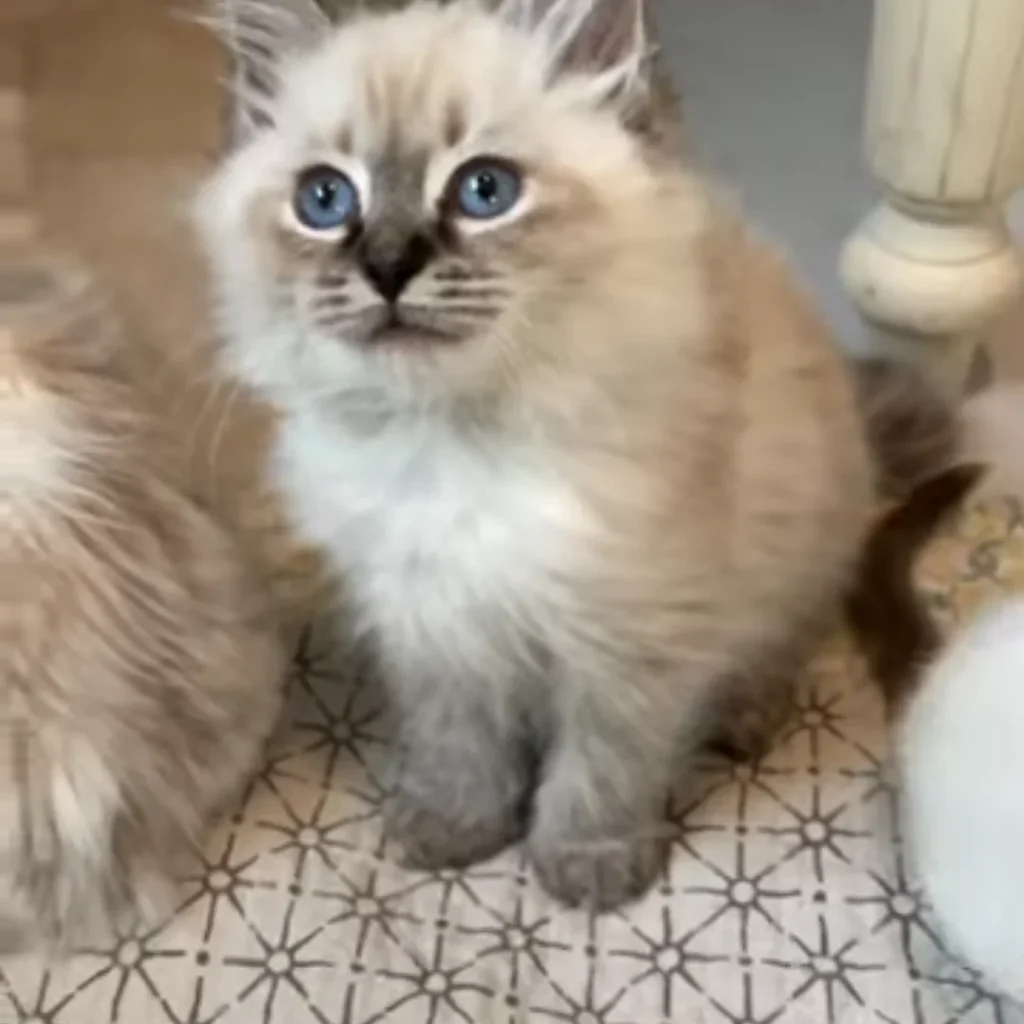
Lynx Points
Lynx points, also known as tabby points, are a variation of the classic pointed pattern but with a twist. Cats with Lynx markings often have faint stripes or spots on their ears, face, tail, and sometimes legs. These markings can give Ragdolls an exotic, wild appearance, even though they are domestic cats.
Tabby Stripes and Variations
There are several types of tabby patterns that can appear in Ragdolls with Lynx markings, including:
- Classic Tabby: Broad, swirling stripes around the body.
- Mackerel Tabby: Narrow, parallel stripes running along the sides.
- Spotted Tabby: Random spots of color across the body.
These markings are not as commonly seen in Ragdolls but still make for a visually appealing variation of the breed.
Ragdoll Cat Markings and Genetics: How Are They Inherited?
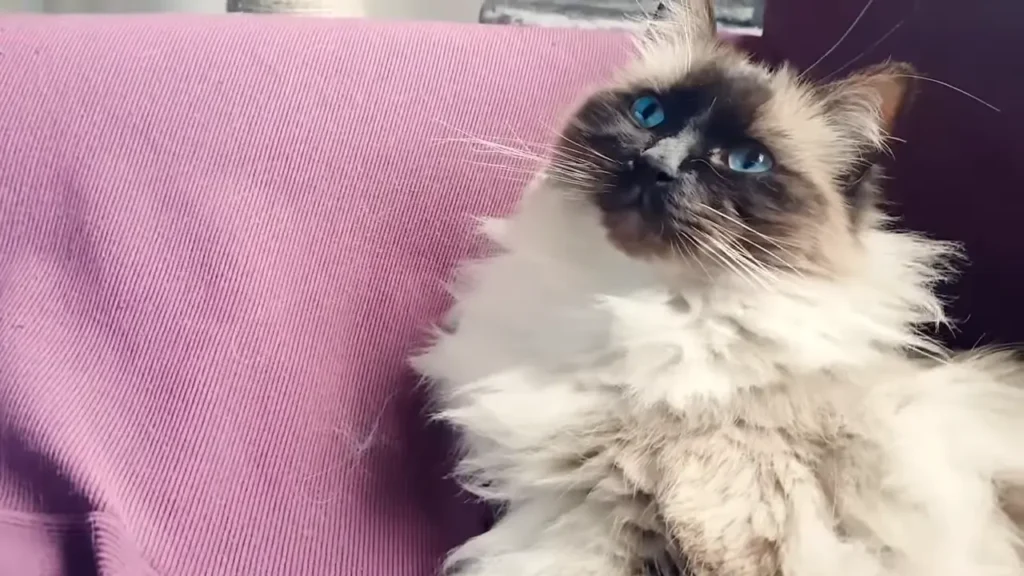
The stunning markings of Ragdoll cats, known for their elegance and variety, are not just a result of their striking appearance—they are also deeply rooted in genetics. Understanding how these markings are inherited can shed light on the processes that create the breed’s characteristic color patterns, from the pointed coats to the mitted and bicolor variations.
Understanding the Genetic Influence on Coat Patterns
Ragdoll cats inherit their coat patterns through a combination of specific genes that control the color and distribution of their fur. The most notable patterns in Ragdolls are pointed, mitted, and bicolor, each governed by different genetic mechanisms.
- Pointed pattern (like Seal Point or Blue Point) is controlled by a temperature-sensitive allele of the Himalayan gene (cs), which causes darker fur on the cooler parts of the body, such as the ears, paws, face, and tail.
- Mitted cats, which feature white mittens on their paws, a white chin, and a white belly stripe, are influenced by the mitten gene (m), a dominant gene that causes the white fur pattern.
- Bicolor Ragdolls, recognized by their characteristic white inverted “V” on the face, also inherit a combination of the pointed and dominant mitten genes, but with additional genetic factors controlling the white fur distribution across the body.
Gene Combinations
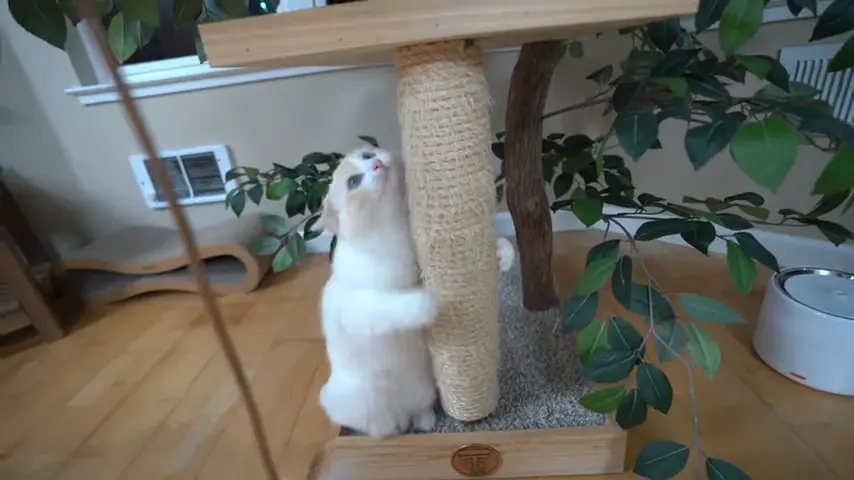
The combinations of these genes determine the specific markings seen in Ragdolls. For example, a Ragdoll may inherit a pointed pattern from one parent and a mitted pattern from another, resulting in a pointed mitted cat.
Similarly, the bicolor pattern may result from specific genetic combinations that express the inverted V face marking while maintaining pointed extremities.
Breeders carefully pair cats with specific markings to achieve the desired coat patterns, and understanding these genetic combinations is crucial for producing kittens with particular traits.
A cat with a mitted pattern and another with a bicolor pattern, for example, might pass down the white belly and paw markings along with the inverted V marking on the face.
Breeding Considerations
When selecting breeding pairs, Ragdoll breeders must consider not just the markings, but also the gene types carried by each parent. Pairing cats with compatible genes ensures a higher likelihood of producing kittens with specific markings, such as pointed or bicolor patterns. This is why it’s important for breeders to understand how different genes interact—combining the right genes can help produce a consistent look across the litter.
Linking Genetics to Cat Temperament
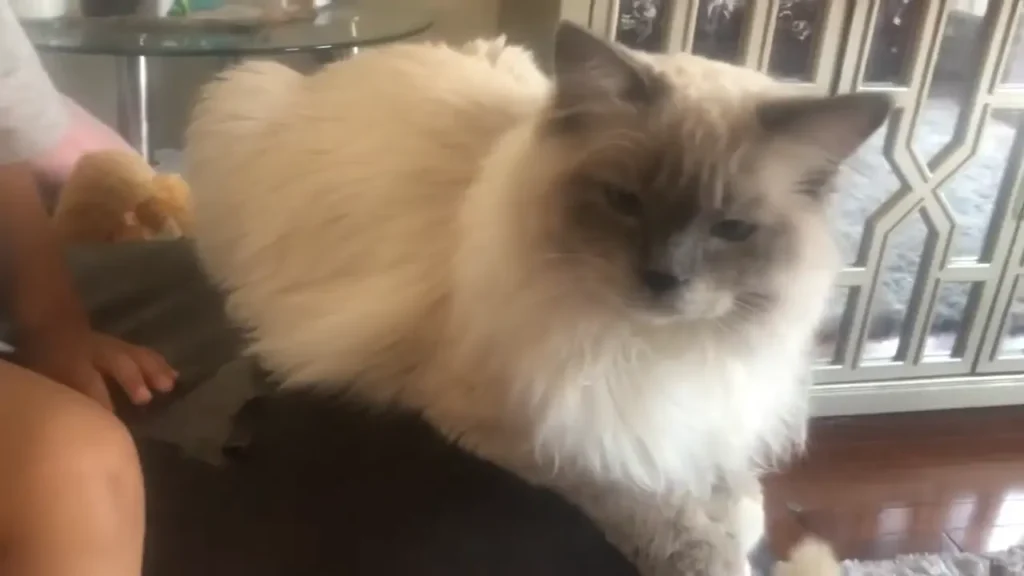
While there’s no definitive scientific proof linking a cat’s markings to its temperament, some breeders and enthusiasts have observed trends. For example, Mitted Ragdolls are sometimes noted to be slightly more affectionate than other pattern types, possibly due to the dominance of the mitten gene (m), which might be linked to certain behavioral traits. However, temperament in Ragdolls is generally influenced more by environment and socialization than by markings alone.
How to Choose a Ragdoll Based on Markings
Ragdoll cats are beloved for their striking markings, and choosing the right one can be a fun and rewarding experience. Whether you’re looking for a pet to add to your home or aiming to breed show-quality Ragdolls, understanding the different patterns and their appeal will help you make an informed decision.
Choosing the Right Ragdoll for Your Preferences
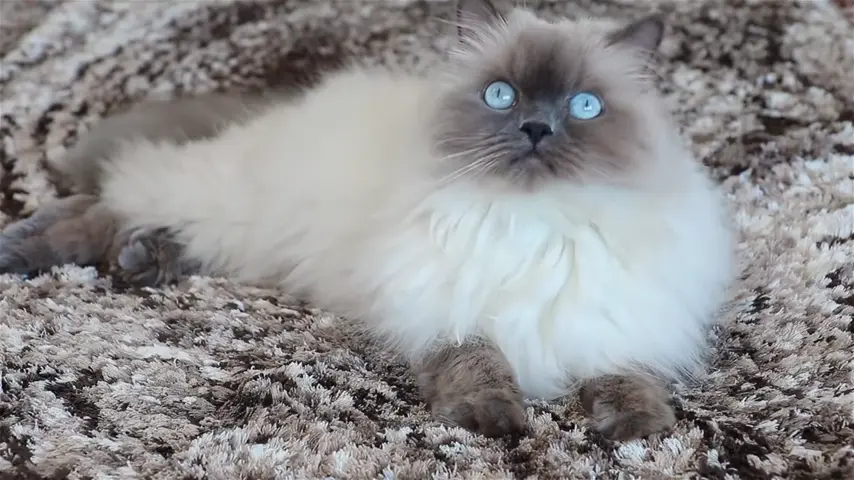
When selecting a Ragdoll, consider which marking pattern most appeals to you. If you prefer a more traditional look, Colorpoint Ragdolls with darker points on the face, ears, tail, and paws may be the ideal choice.
For those who want more white fur, a Mitted Ragdoll offers a beautiful balance with its white “mittens” and chin, paired with a contrasting colored body.
Bicolor Ragdolls, with their dramatic inverted “V” face markings and even color distribution, offer a symmetrical and striking appearance.
Consider also the contrast and intensity of the colors. Seal Point Ragdolls have a deep, dark chocolate color, while Blue Points appear in a soft bluish-gray shade. If you’re drawn to subtler, more pastel shades, Lilac Points could be the right fit.
Considerations for Show Cats
If you’re aiming to acquire a show-quality Ragdoll, it’s important to refer to the CFA (Cat Fanciers’ Association) and TICA (The International Cat Association) breed standards. Both organizations prioritize Bicolor Ragdolls for their symmetrical white markings and balanced color distribution.
Ideal show cats typically have distinct, clean lines between the white and colored areas, with an expressive, “inverted V” face marking. Mitted Ragdolls with well-defined mittens and a full white belly also do well in competitions.
Popular Markings and Their Appeal
Among pet owners, Bicolor and Mitted Ragdolls tend to be the most popular due to their unique and visually appealing white markings.
Bicolor Ragdolls stand out for their dramatic, symmetrical appearance, making them a favorite choice for those looking for a stunning companion. Mitted Ragdolls, with their soft, balanced look and affectionate nature, also tend to be highly sought after.
Ultimately, the choice comes down to personal preference and whether you prefer a dramatic contrast or a more delicate, understated look.
Whether you’re choosing a Colorpoint, Mitted, Bicolor, or Lynx Ragdoll, understanding these markings is essential to fully appreciating the breed’s beauty. These coat patterns aren’t just decorative—they’re part of the genetic makeup of the breed and contribute to the unique personality and charm of each individual cat.
By learning about these various types of Ragdoll markings, you can confidently select the right cat for your home or breeding program. And no matter which pattern you choose, rest assured that your new Ragdoll will be as lovable and affectionate as they are beautiful.

